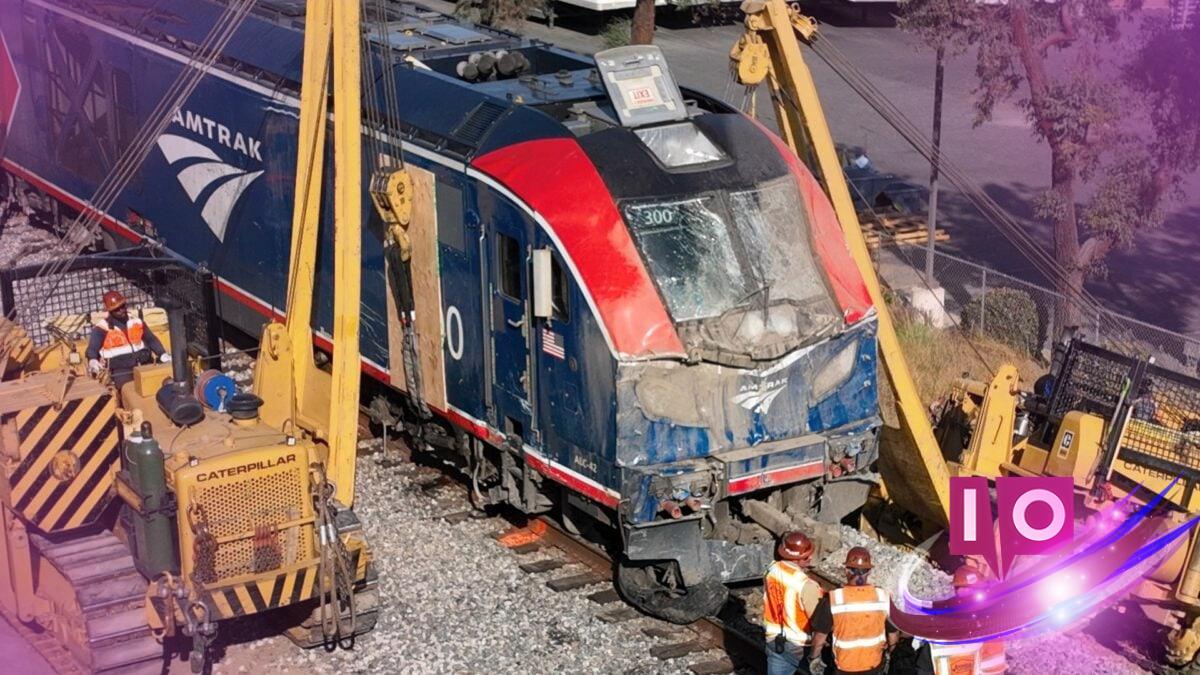The Cybersecurity and Infrastructure Security Agency (CISA) recently issued a warning about a serious vulnerability in key train systems that could be exploited with just a radio and some technical know-how. This alarming finding has raised significant concerns about rail safety and security.
The potential issue centers around the communication protocol used in train systems, specifically the End-of-Train (EOT) and Head-of-Train (HOT) devices. These devices, which were introduced in the 1980s to replace traditional caboose cars, have been found to lack essential encryption and authentication measures. Instead, they rely on basic data packets and a simple BCH checksum to detect errors or interference.
This vulnerability opens the door for malicious actors to send spoofed data packets, potentially disrupting train operations. The CISA noted, “Successful exploitation of this vulnerability could allow an attacker to send their own brake control commands to the end-of-train device, causing a sudden stoppage of the train, which may lead to a disruption of operations or induce brake failure.”
The researchers Neil Smith and Eric Reuter brought this critical vulnerability to the agency’s attention. Smith revealed that he first alerted the Industrial Control Systems Cyber Emergency Response Team (ICS-CERT) back in 2012, but little action was taken to address the concern.
So, just how severe is this vulnerability? Smith explained that an individual could gain remote control of a train’s brake system from a substantial distance using equipment costing less than $500. This could lead to catastrophic consequences, such as derailments or even shutdowns of national rail systems.
Smith recounts a frustrating stalemate between ICS-CERT and the Association of American Railroads (AAR) from 2012 to 2016, where the AAR deemed the risk too theoretical, demanding proof of real-world implications before initiating changes.
Fast forward to 2024, after repeated presentations of the threat, the AAR is finally set to upgrade the outdated system by 2026. However, John Butera, CISA’s Acting Executive Assistant Director for Cybersecurity, attempted to alleviate immediate concerns by stating that the rail sector stakeholders have been aware of this vulnerability for over a decade. He emphasized that exploiting such a flaw would require physical access to rail lines, specialized equipment, and in-depth protocol knowledge.
With the recent advisory, many are now wondering what precautionary measures are being taken. CISA is collaborating with industry partners to formulate effective mitigation strategies and assured that a concrete solution is underway.
It’s worth noting that the AAR has yet to respond to requests for further commentary on the situation.
Is the train security risk a genuine concern right now?
While the vulnerabilities are recognized, the CISA indicates that widespread exploitation is limited by the need for physical access and specialized knowledge.
What are EOT and HOT devices used for in trains?
These devices facilitate critical communication, relaying operational data and brake commands between the rear and the front of a train, essential for maintaining safety and control.
How long has the cybersecurity risk in train systems been known?
The first reports about the EOT and HOT vulnerabilities surfaced back in 2012, and the issue has been acknowledged by several industry stakeholders since then.
When will the outdated train systems be upgraded?
The AAR has announced plans to upgrade the antiquated systems by 2026, following years of debate about the risks involved.
In conclusion, the cybersecurity vulnerability in train systems is not just a technical issue but a matter of public safety. The CISA’s advisory highlights the importance of continued vigilance and proactive measures in the face of emerging threats. For more insights and updates on this topic and others, visit Moyens I/O.
